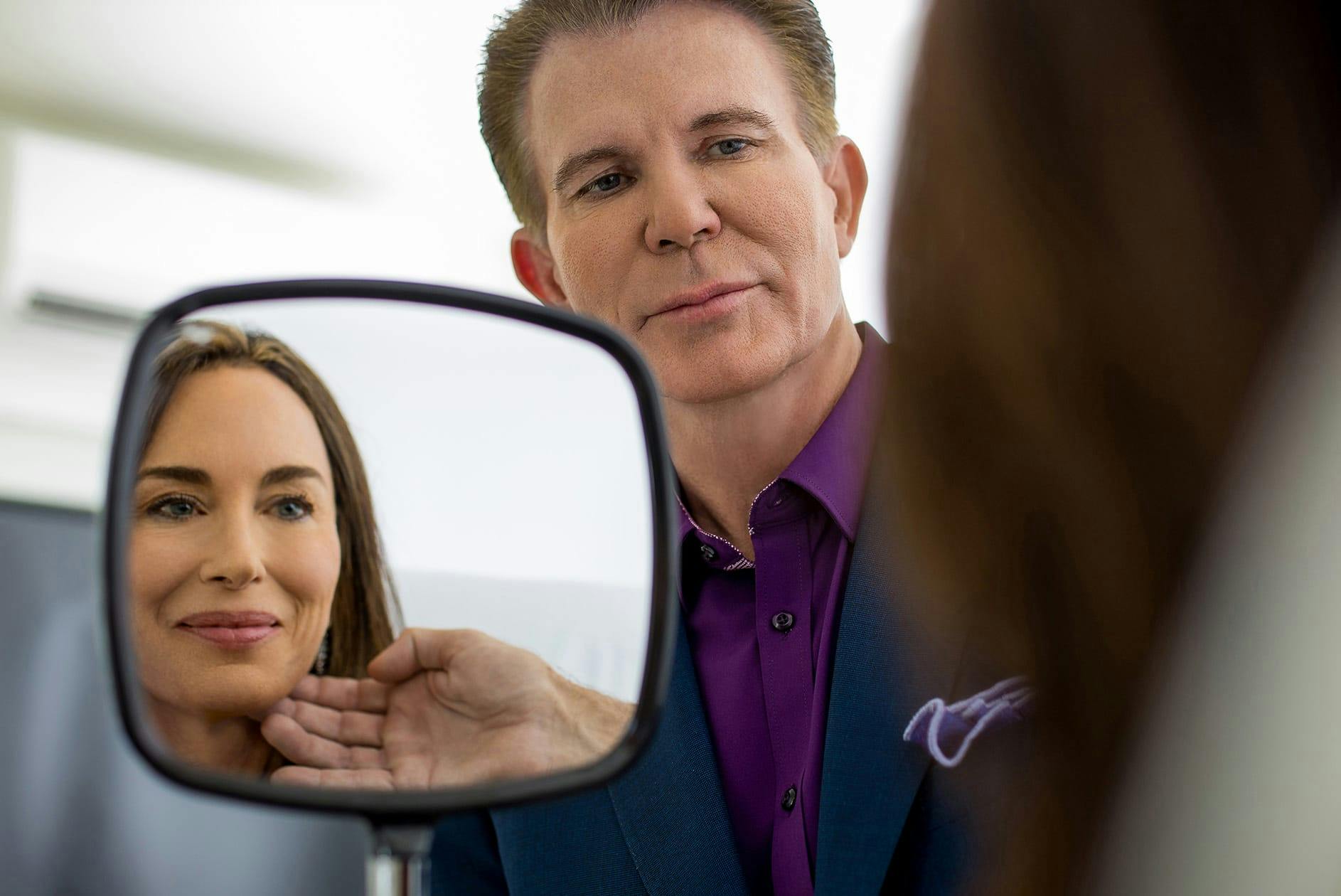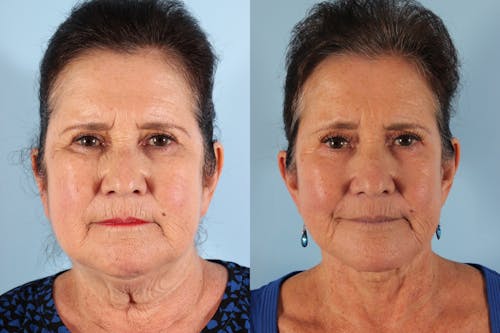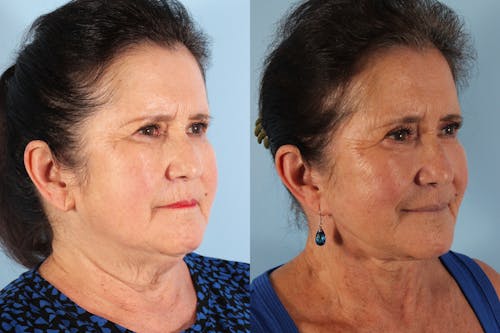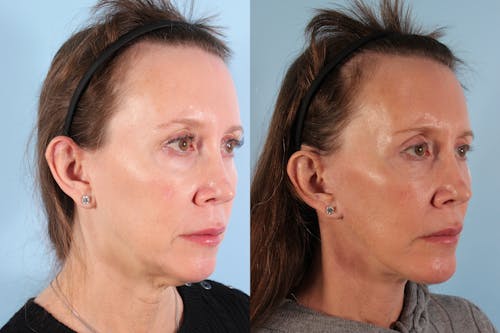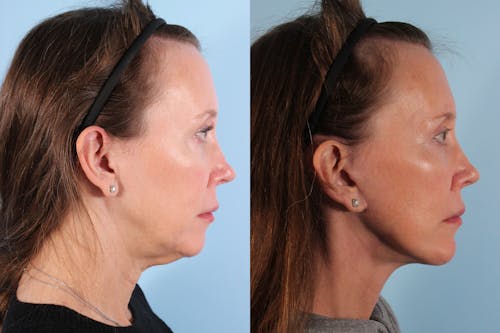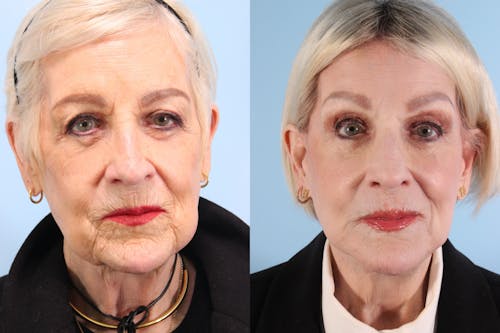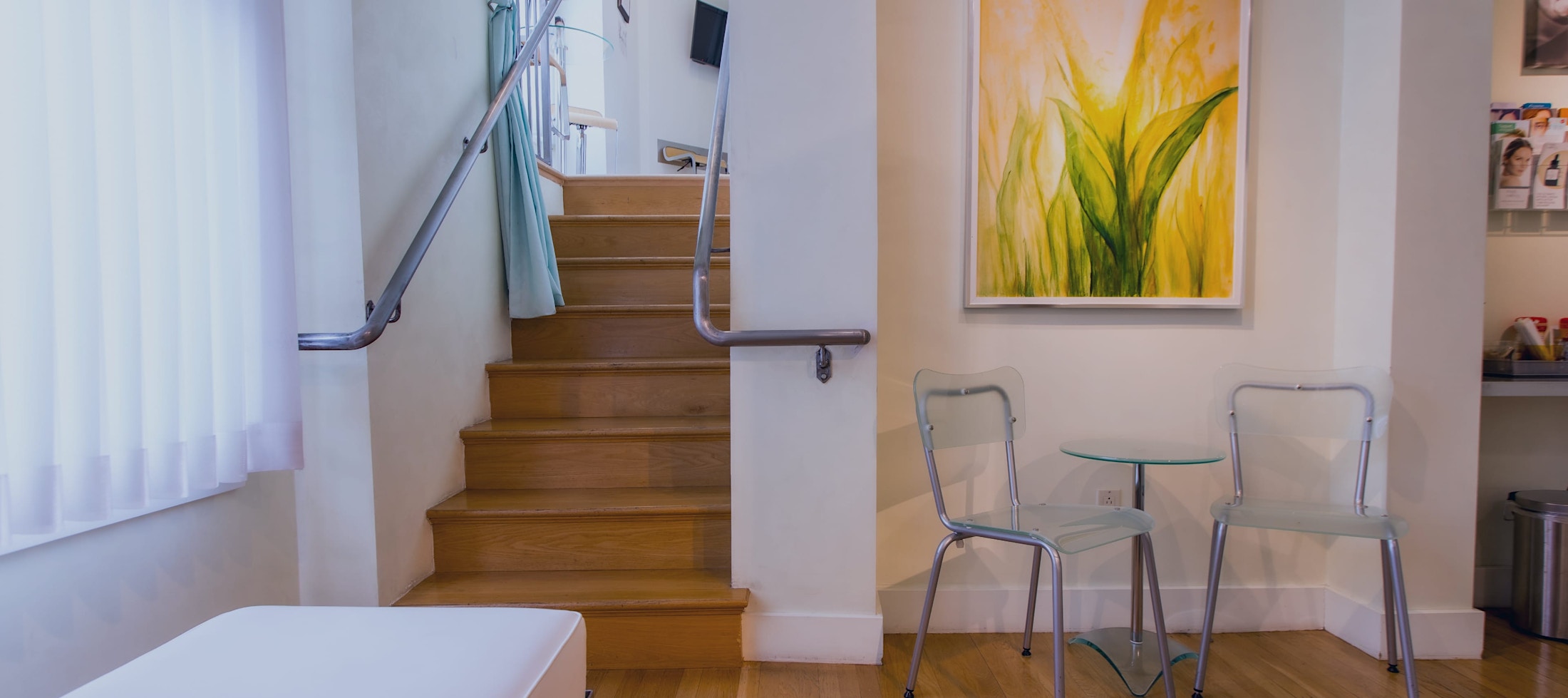Facelift (Lower)
A lower facelift, traditionally referred to as a standard facelift in surgical textbooks, focuses on lifting sagging tissues and skin from the cheekbone to the neck. It addresses loose skin and prominent neck muscle bands (platysma) while restoring youthful facial contours.
By utilizing the SMAS (Superficial Musculoaponeurotic System) in a lower facelift, tension is applied beneath the skin, avoiding an over-tightened look. The extended SMAS technique allows for gentle, natural skin redraping. Expert facelift surgeons pay close attention to key areas to achieve balanced and natural results:
They maintain the hairline above and behind the ear. Every patient is different, and while some surgeons "do every patient the same way," Dr. Maas believes that the facelift assures the hairline is maintained in the temple area and carefully aligned behind the ear. The incisions for men's and women's facelifts remain hidden behind the prominent cartilage in front of the ear – the tragus. Any hair-bearing skin that is moved into this area can have the hair ablated or removed at the time of surgery or after.
They achieve a refreshed yet natural appearance. The facelift in men and women never looks over-pulled or over-stretched. This natural-looking result is the value of the extended SMASplasty facelift technique developed by Dr. Maas at the University of California San Francisco and later refined at The Maas Clinic™. By elevating the SMAS layer, Dr. Maas can achieve effective contour restoration without creating an unnatural pulled or windswept look.
They maintain the position of the earlobe. The earlobe must rest in a natural position without looking pulled or distorted.


